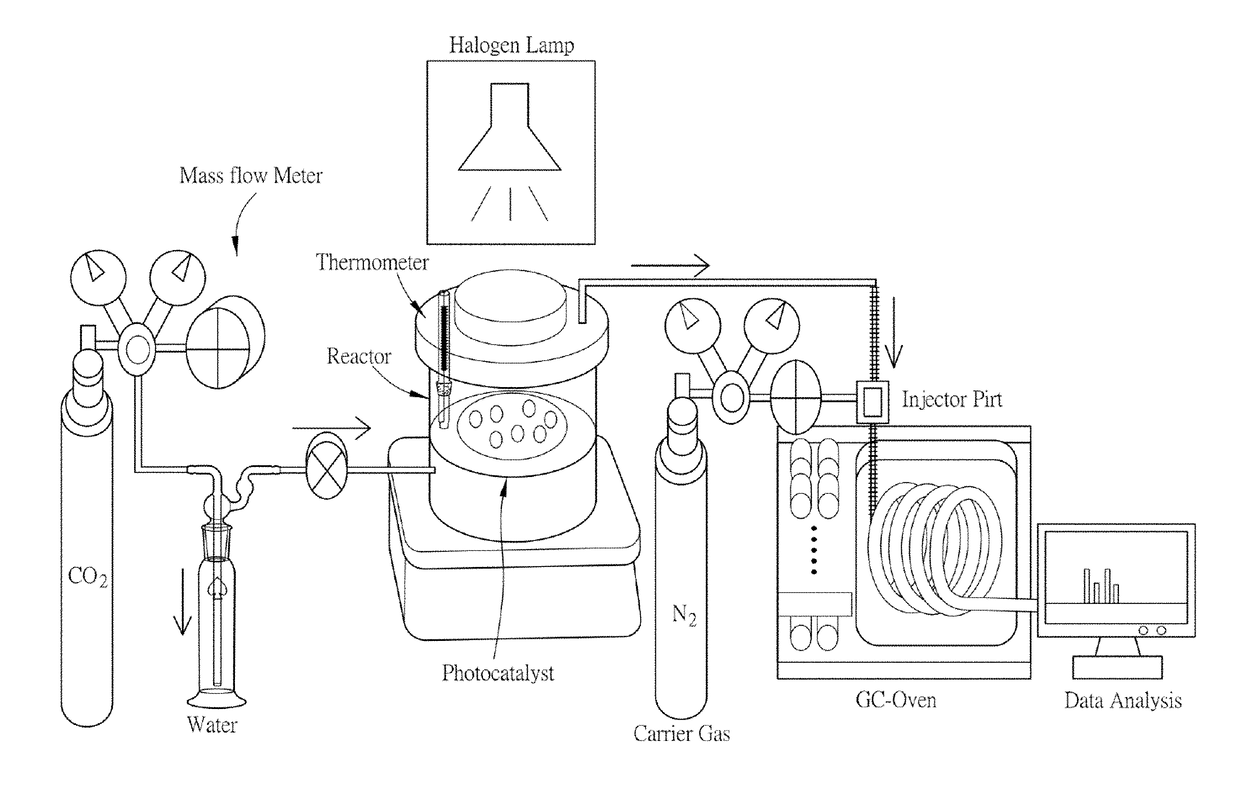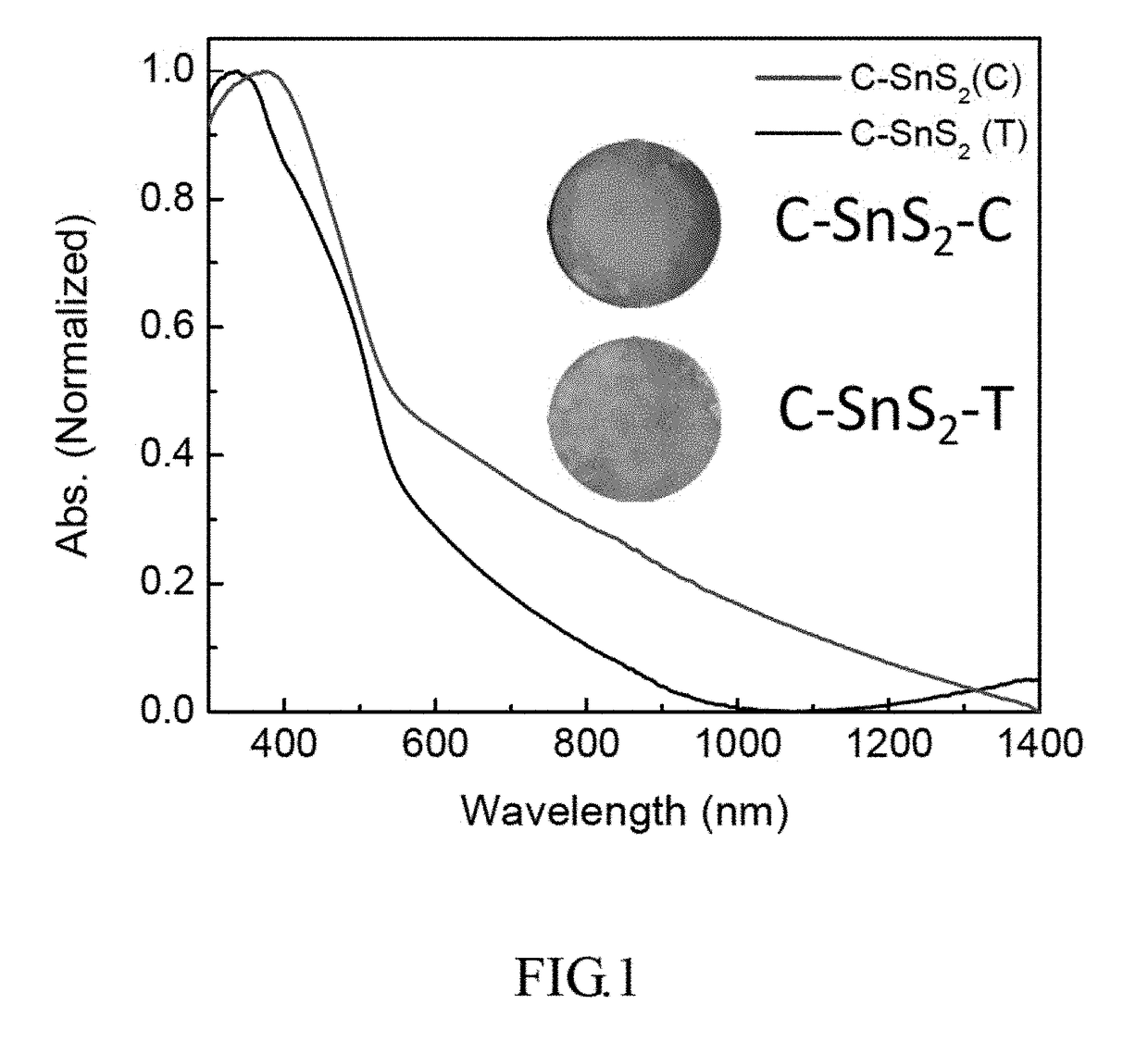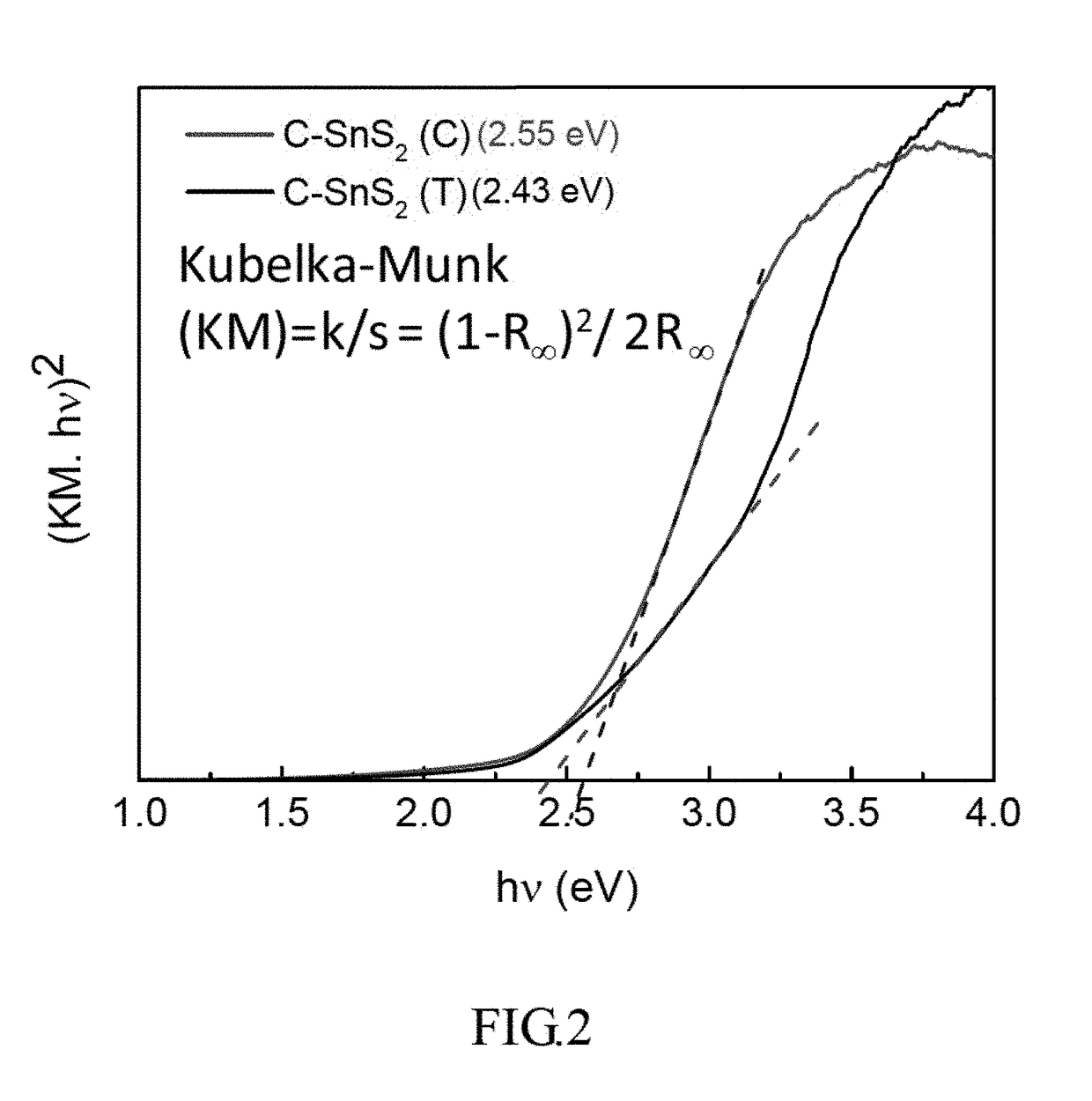Carbon doped tin disulphide and methods for synthesizing the same
a technology of tin disulphide and sns2, which is applied in the field of carbon doped sns2, can solve the problems of high energy consumption of renewable solar energy generation processes, insufficient wide band gap and high cost of tio/sub>or other related wide band gap semiconductor photocatalysts for practical application
- Summary
- Abstract
- Description
- Claims
- Application Information
AI Technical Summary
Benefits of technology
Problems solved by technology
Method used
Image
Examples
example 1
Synthesis of Carbon Doped SnS2 by Hydrothermal Process Based on Cystine [C—SnS2(C)]
[0058]In a typical procedure, 1 mM of tin (IV) chloride pentahydrate (SnCl4.5H2O) and 5 mM L-cysteine (C3H7NO2S) were added to a 60 ml of distilled water and gradually dispersed to form a homogeneous solution by vigorous magnetic stirring for 1 hr. at room temperature. Finally, the resulting solution was transferred into a Teflon-lined stainless autoclave. The autoclave was sealed and heated at 180° C. for 24 hrs. After hydrothermal reaction, the sample was cooled to room temperature naturally. The resulting product was collected by centrifugation at 8000 rpm for 10 min and washed several times with distilled water. Finally, the collected yellow C—SnS2 powder was vacuum-dried at 80° C. overnight.
example 2
Synthesis of Carbon Doped SnS2 by Hydrothermal Process Based on Thiourea [C—SnS2(T)]
[0059]In a typical procedure, 1 mM of tin (IV) chloride pentahydrate (SnCl4.5H2O) and 5 mM thiourea (CH4N2S) were added to a 60 ml of polyethylene glycol-400 (PEG-400) and gradually dispersed to form a homogeneous solution by vigorous magnetic stirring for 3 hr. at room temperature. Finally, the resulting solution was transferred into a Teflon-lined stainless autoclave. The autoclave was sealed and heated at 220° C. for 15 hrs. After hydrothermal reaction, the sample was cooled to room temperature naturally. The resulting product was collected by centrifugation at 8000 rpm for 10 min and washed several times with distilled water. Finally, the collected yellow C—SnS2 powder was vacuum-dried at 80° C. overnight.
example 3
Characterization
[0060]The ultraviolet-visible absorption spectrum of powder samples was measured with a Jasco V-670 spectrophotometer using an integrated sphere. The crystal structures were determined by XRD using CuKα radiation (Bruker, D2 PHASER with XFlash). The surface morphology of all samples was characterized by field emission scanning electron microscopy (FESEM, JEOL, 6700F). The high-resolution transmission electron microscopy (HRTEM, JEOL-2100) studies with selected area electron diffraction (SAED) and EDX were also performed to determine morphology, crystal phase and elemental compositions. X-ray Photoelectron spectroscopy (XPS) analysis was performed on a theta probe ESCA VG Scientific (2002) using a monochromatic AlKa as the exciting source. The peak positions of the XPS were calibrated carefully with respect to the Au 4f peak. Finally, the XPS spectra were deconvoluted by using Voigt fitting function after a Shirley background subtraction procedure.
PUM
| Property | Measurement | Unit |
|---|---|---|
| length | aaaaa | aaaaa |
| size | aaaaa | aaaaa |
| temperature | aaaaa | aaaaa |
Abstract
Description
Claims
Application Information
 Login to View More
Login to View More - R&D
- Intellectual Property
- Life Sciences
- Materials
- Tech Scout
- Unparalleled Data Quality
- Higher Quality Content
- 60% Fewer Hallucinations
Browse by: Latest US Patents, China's latest patents, Technical Efficacy Thesaurus, Application Domain, Technology Topic, Popular Technical Reports.
© 2025 PatSnap. All rights reserved.Legal|Privacy policy|Modern Slavery Act Transparency Statement|Sitemap|About US| Contact US: help@patsnap.com



